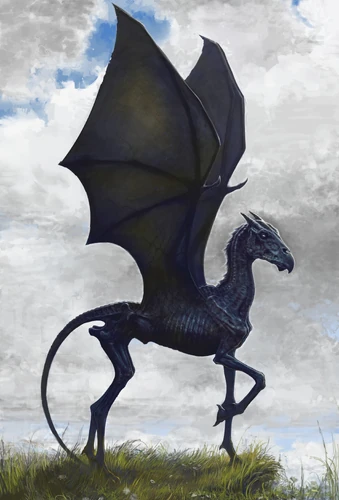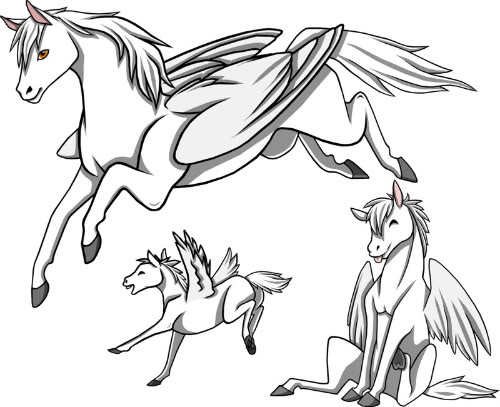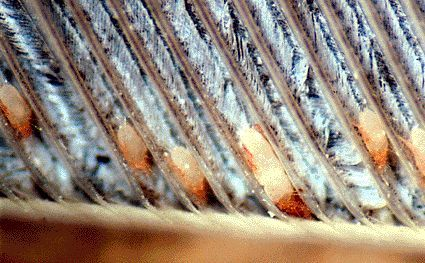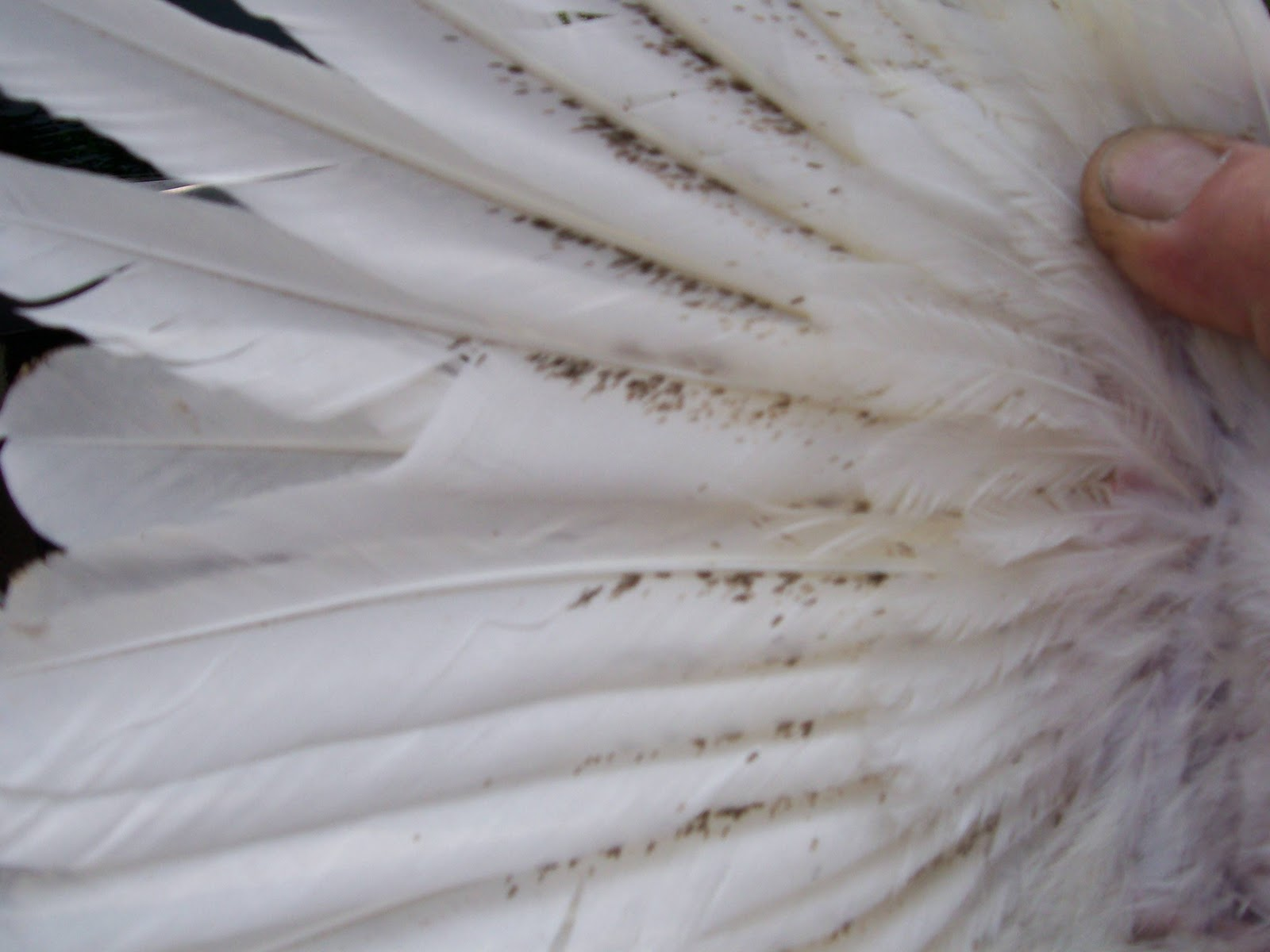Announcements
Welcome to Care of Magical Creatures 601!
I'd like to give you a warm welcome to the Care of Magical Creatures classroom! If you have any questions about the class, please feel free to reach out to Professor Montclam by owl or visit her newly refurbished office!
Note: During the transfer period of professors, you may find some inconsistencies among the lessons. I appreciate your cooperation during this time!
Lesson 6) It’s Time to Take Flight
Welcome back to the Care of Magical Creatures hut! I hope you all are pleased with how you did on the midterm; I know Professor Cattercorn and I were very impressed with the results. It is clear you are all taking your coursework very seriously. Today we will be discussing one overarching group of creatures and the four main breeds held within it. As you all should be aware of, either because you can see them or because you have heard from others, one breed of these pulls the carriages you take up to the castle from the train station at the start of each year. I am going to go over them breed by breed, and then generic information that is relevant to all at the end. We also have a guest speaker towards the end of the lesson. Settle in and get comfortable, as this will be a long lesson! I have provided some fun horse-themed snacks, so make sure to grab some now or when you leave.

Abraxan
The first breed we are covering today is the Abraxan. Newt Scamander describes them as “immensely powerful giant palominos,” which is completely accurate. These horses were as large as elephants, with a white mane and tail and a palomino, or light brown, body. Their wings were covered in thick white-blue feathers. They had long been used to pull carriages. In fact, Beauxbatons used them to pull their carriages when they traveled to other schools. Beauxbatons also only gave their Abraxans single malt whiskey to drink, and while not the healthiest option, it made their herd develop a much larger average size. Magizoologists do not recommend this method when attempting to make any winged horse breed larger and more powerful. It is better to use selective breeding techniques. The Abraxan is sadly extinct. This extinction came about in the early 21st century due to overuse. Because they were one of the largest breeds, they were often used as slave animals. With the animals being overworked, and never being bred, we see a dramatic decline in Abraxan populations in 2004. Ultimately, the Department for the Regulation and Control of Magical Creatures declared them extinct in 2007. Some genetic material has been preserved, and magizoologists have hope that Abraxans can one day roam the Earth again when we are able to genetically engineer them.
Aethonan
The second breed we are covering today is the Aethonan. Aethonans are a mid-sized breed of winged horse that are chestnut, or dark brown, in color. They have brown to black feathers on their wings. While not a popular breed, they were famously bred by 18th century magizoologist Lord Stoddard Withers. Withers bred them with the intent to increase their popularity by using them in a new wizarding game. This game combined elements of polo, a sport played on horseback where the goal is to take a ball from one side of the field to another using a mallet, and Quidditch. The sport never caught on, and after Wither’s death in 1769, the Aethonan breed almost died out. They have since been brought back from the brink of extinction, being kept in winged horse rescues worldwide, where they are protected.
Granian

Granians are a grey breed of winged horse that are known for their incredible speed. They are the fastest of the breed of winged horses, and are often used in winged horse racing. It is uncommon to own them as pets, however there are several breeding ranches across Europe and the Americas. When attempting to identify them, it is best to look at their wings. The muscles present in their wings and down into their shoulders are much larger than other winged horses. This is why they are so much faster than other breeds. In an attempt to make winged horse racing more entertaining to watch, magizoologists have attempted to breed Granians with Aethonans to gain other colors. So far, some brown and black Granians have been seen, but in cross breeding them with Aethonans the larger wing muscles are lost, causing them to not be used in the racing industry.
Thestrals

Thestrals are one of the rarest breeds of winged horse. They are appear to be simply skin and bones, and are jet black in color. Their wings do not have feathers, and are very similar in appearance to bat wings. Thestrals are among the most intelligent of the winged horse breeds. For example, if you tell a Thestral where you want to go, they can understand your speech and fly to that place. Like many are aware, you can only see Thestrals if you have seen and processed death. If you are still in shock or denial about a death you witnessed, you will not see them. This leads me to answer a question I’m sure you are all asking yourselves: can you see Thestral droppings? The answer is yes! If you cannot see Thestrals, you can watch the food disappear as it is eaten, and then see their manure appear from thin air. Magizoologists that cannot see Thestrals track them by seeking out their droppings. Their manure appears bright red because of their diet, making it easy to spot on forest floors. Their diet also causes them to have an XXXX rating. The other three breeds we have covered today all have an XXX rating. Now, why does their diet cause them to have a more advanced rating? Because they are carnivores. They feed mostly on small mammals, but there have been cases of Thestrals eating human fingers. I wouldn’t worry too much, just don’t let them get a hold of your hands!
Diet and Habitat
As mentioned, most winged horses are herbivores, feeding on the vegetation provided to them or in their surrounding habitat. The one exception to this is Thestrals, who are carnivores by nature and are lured to an area by the scent of blood. Like any animal that feeds on plants, winged horses should not eat poisonous plants like oleanders. While you typically have to make sure a creature does not consume them, winged horses have a special sense that allows them to detect poisonous plants. When investigated by magizoologists, it was determined that winged horses can smell a difference between the plants. Do recall, animals as a whole have a much better sense of smell than us.
Winged horses can live in any type of environment. They adapt well to weather extremes, and because of their diet, can typically find food. The only issue might be a desert region, where vegetation is lacking, but winged horses in this environment are often in captivity and are provided plenty of greens. If you were looking for a winged horse in the wild, it is best to look in forested areas, as they provide plenty of vegetation and cover to keep from being discovered.
Temperament and Behavior
As a whole, winged horses are very kind, quiet creatures. However, that is not to say they don’t have a temper when provoked! Winged horses prefer to stay out of the public eye, aiding in keeping their existence a secret from Muggles. The larger breeds can be more of a handful, simply because of their sheer strength and size. Should you anger a winged horse, beware, you may not be able to make it away fast enough. They will attempt to stomp on you, which can seriously injure you if you are not careful. In order to avoid angering a winged horse, you can take some slight precautions.
- Never make sudden movements and always approach them slowly.
- Don’t raise your voice or make loud noises.
- Don’t be nervous or tense.
By following these three precautions, you should not have to worry about a winged horse trying to stomp you to death! It is an extremely rare occurrence, really, so there is no need to worry.
Reproduction
Winged horses breed year round, though they prefer the fall. Their gestation period is exactly 365 days. They can interbreed with other winged horse breeds, though herds are often not mixed, so this only ever happens in captivity, in situations like we discussed above. When foals, or baby winged horses, are born, they can’t fly right away. It actually takes them up to six months to be able to fly. This is because their body is still growing and developing, and it takes anywhere from four to six months for their muscles to become strong enough to support flight. Now, in breeds with larger shoulder muscles, we see foals flying closer to the four month end of the time period rather than the six month. The image below shows a foal that is about four to six months old, as well as one that is about a year old.

Owning a Winged Horse
While owning a winged horse sounds fun, there are some guidelines you have to follow. Like many magical creatures, a Disillusionment Charm must be placed on them regularly if you live near Muggles. For most breeders, this means at least once a month. Some breeders with large herds opt to perform one twice a month for security purposes. Depending on where their herd is located, breeders may also opt to cast a Caterwauling Charm, which will cause an alarm to be set off should someone set foot in the perimeter that is given when the spell is cast.
If you decide to own a winged horse or a herd, you do need to report it to the Department for the Regulation and Control of Magical Creatures. While you do not need a license to own them, they do like to keep track of the different populations around the country in case an issue occurs. This could be as simple as a winged horse wandering into a Muggle village or something more serious, such as a stomping.
The Department for the Regulation and Control of Magical Creatures does require Thestral breeders to be able to see them. This is simply for safety and security reasons. It is hard to cast a charm on a horse you can’t see! This also ensures that part of your herd does not go missing under your nose. You must also prove you have a sustainable way to feed your Thestrals. It is important not to encroach on the indigenous species of their habitat. Most breeders breed small mammals, like rabbits or squirrels, alongside their Thestrals to support their diet.
Winged Horse Racing
Winged horse racing is a very popular sport in the wizarding world, though not as popular as Quidditch! Like Muggle horse racing, there are several important races every year that are watched avidly by the wizarding community. One of the most important races is the Galleon Classic, which is held in March every year. Like the Quidditch World Cup, its location changes each time. Winged horse breeders from all over the world come together to see who has the fastest horses. All winged horses have jockeys, or their riders, which guide them through the race and gain fame from riding winning horses. While the Galleon Classic is the most important, each country has several smaller races throughout the year to qualify for the Galleon Classic. One of the qualifiers in the United Kingdom is the Whirling Cup, which takes place in Ireland every year.
No matter what race you attend, you will notice that they are all structured exactly the same. Races are divided by breed, allowing for fairness between breeds like Thestrals and Granians. There is also a class for horses that are crossbreeds. With Thestrals, it is a requirement that their jockey can see them. Like breeders being able to see them, this goes back to safety and security. The horses wear colored saddles and face masks, which allow those that cannot see Thestrals to still enjoy that part of the race.
If you have ever seen a winged horse race, you may notice that each jockey and horse pairing has special colors they wear. This is based on the stable, or breeding operation, they originate from. Each jockey is hired by a breeder to ride their horse based on previous races they have won or their experience in the field. From year to year, jockeys can move from stable to stable, depending on how well they are competing and the deals they are being offered. Each stable typically has sponsorship deals with different companies, like Bertie Bott’s or Weasleys’ Wizard Wheezes. These companies give them money to support the entrance and travel fees of racing, as well as put their logo on any team apparel to advertise. It is a great deal for all involved.
Of course, there are two aspects to the sport. While the first is racing, the second is betting. Winged horse race gambling is one of the most lucrative industries currently. What better way to make money than to con wizards into betting on horses that may or may not win? The betting itself could even be considered a sport with all of the thinking involved. Those that gamble professionally are able to accurately predict who will win a race about 90% of the time, allowing them to turn a huge profit. Many gamblers live on their gambling income alone. While I am not advertising a gambling lifestyle, it is important to understand how active this part of winged horse racing is, and how it can really affect the politics of the sport. As a final reminder, you must be of age to place a bet at a horse race, so don’t get any ideas about the next race you attend!
Feather Mites
Now, as a winged horse breeder, you are always on the lookout for a disease that can ruin your racing year: feather mites. Feather mites, also commonly called red mites, attack the wings of winged creatures. In the Muggle world, this means birds. In the wizarding world, this means birds, hippogriffs, winged horses, and anything else that has feathers. It is incredibly important to be on the lookout for these mites, as they can completely ruin the racing season for a horse.

Depiction of the mites in the wings, latching onto the skin, and showcasing the red head of the mite
These mites chew holes in the wings of the creature in order to get closer to the skin and consume their blood. The best way to identify this if you are having trouble telling is by holding the feathers up to the light. You should see the holes pretty quickly. In the image below, you can see the brown shining through the white, which is actually the ground below. If the mites eat enough of a feather, you might have to pluck it. If enough are plucked, it will affect the horse’s ability to fly.

The best way to remove mite infestations after they start is to siphon them away using a cleaning spell. To remind you of one, I have provided the spell block below.
Incantation: Tergeo
Wand Movement: Point wand at the object.
Willpower: Low to medium depending upon the viscosity of the liquid.
Concentration: The object you wish to remove liquid from. Visualize the liquid being siphoned from the object.
Category: Static
To prevent the infestation from occuring in the first place, there are several different remedies and potions that are sold in stores. These vary, but the majority require it to be applied to the wings of the creature every three or so months. These potions make the wings and flesh taste bitter to the mite, causing them to drop off and look for another host.
I would now like to digress and welcome former Professor Morgan to the hut today! She is going to discuss winged horses in mythology, giving you a historical and mythological perspective on these amazing creatures.
Hello everyone!
It is my great pleasure to be joining your class today.
Winged horses are a fascinating topic, and one that has somewhat crossed the magic-Muggle barrier, as they are found in myths across Europe and Asia.
The most famous myth featuring a winged horse is that of Pegasus (which is the name that Muggles often use to mean “winged horse”) and his rider, Bellerophon. Now, we treat this story as a myth, as that is how Muggles know about it, but in truth Bellerophon and Pegasus are real historical figures, which you learn more about in Mythology, Year Five.
While Bellerophon often gets all of the credit for being the only wizard on record who has killed a chimaera, Pegasus is much more than just his loyal steed. In truth, Pegasus was a very unique Granian, in that he was an albino - a condition that is quite rare, even for magical creatures. But real he was, and there may be a grain of truth in some of the other winged horse myths as well.
Another fairly well-known myth is that of the Norse valkyries. These great warriors rode through the battlefields of Midgard (Earth) gathering up the souls of the brave to fight alongside the Asgardians during Ragnarok - the end of days. Now what did they ride on? Well, it is here that the myths differ. Some myths portray these mounts as dragons, but the vast majority indicate some sort of flying horse - wings optional.

The Ride of the Valkyrs. John Charles Dollman, c. 1909
Now I am not familiar with any horses that are flying without wings, but can say that these flying horses could equally be in reference to two different types of winged horses. They could even be a mix of the two types as the Aethonan are native to that area of the world, as are the Granian. The Granian may be the most likely as this type of winged horse was actually named after the mythological fast-footed horse Grani, who belonging to the hero Sigurd, also of Norse mythology. Sigurd, like Bellerophon, is a historical figure, and so we can conclude that Grani was most likely a real winged horse.
A third, and perhaps more fictional myth including winged horses is that of the Chinese Chollima, a very fast flying horse that was supposedly too fast to be tamed by a mortal man. While the swiftness of a Granian may come to mind in this story, there are no breeds of winged horses that are native to this area of the world. The most likely explanation of this myth is due to the Silk Road, the great trading routes that connected the eastern side of ancient China all the way to Europe. It is quite possible that a merchant saw a winged horse on his travels, and told the story of his futile attempts at catching it to his family and friends. Over time, this story became an often-told myth that was incorporated into the myths of the nation.
This process of turning a somewhat fantastical tale into a myth over time is quite a common one, and it serves the international wizarding community well, as Muggles completely discount all of these true creatures and sightings as pure fantasy!
And that is all the time I have for today, my dears, I hope you enjoy the rest of your class. Perhaps we could all go on a flight someday soon?
Thank you, former Professor Morgan! Such fascinating information. I always find learning more about Muggle myths and how they can relate to our world so interesting!
Well! I think it is time to wrap up for today. On your way out, make sure to pick up your assignment and thank Ms. Morgan for coming in! Also, please take the cookies as if I have this many left over I will eat them all myself! I hope everyone enjoyed the lesson, and I will see you all again next time.
All pictures are found using the Google Images search engine, and belong to their owners.
We will be building off of your prior knowledge of these creatures from popular culture, and helping you understand why they are seen in both worlds. Some of these creatures are considered cryptids or mythological in the Muggle world, whereas others have Muggle counterparts.
- COMC-OWL
Enroll


